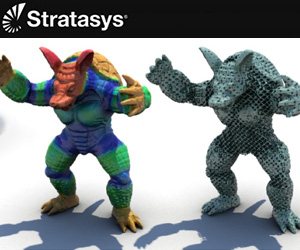Using a new method developed by Disney Research, a 3D-printed teddy bear can have a stiff head, a flexible tummy and bendable arms, even though all of it is made of the same relatively stiff material.
By using a printer to alter the small-scale structure of the material, the Disney researchers showed they could vary its elasticity dramatically. They developed families of compatible micro-structures with varying elastic properties, enabling designers to select the properties desired for each region of an object.
The team demonstrated their new method to produce several deformable toys. “Many functional objects in our everyday life consist of elastic, deformable material, and the material properties are often inextricably linked to function,” said Christian Schumacher.
3D printing usually involves only a single material or a very small set of materials.
“However, 3D printing easily produces complex, 3D micro-structures which we can use to create metamaterials with properties beyond those of standard printer materials,” Schumacher said.
Metamaterials are substances that derive their bulk properties from the shape and arrangement of their micro-structures, rather than the composition of the material itself.
What the Disney Research team did was to use a variety of these metamaterials so that different regions within a single object could have different elastic properties.
To create an object, these micro-structures measuring 8 mm on a side are tiled together in the object’s interior.
The researchers created an algorithm for optimizing the combination of these micro-structures, making sure that micro-structures of different shapes connect properly.
In the demonstration, the team showed that this method could be used to produce fully articulated figures, with joints that bend even through the remainder of each limb was stiff.









Leave A Comment